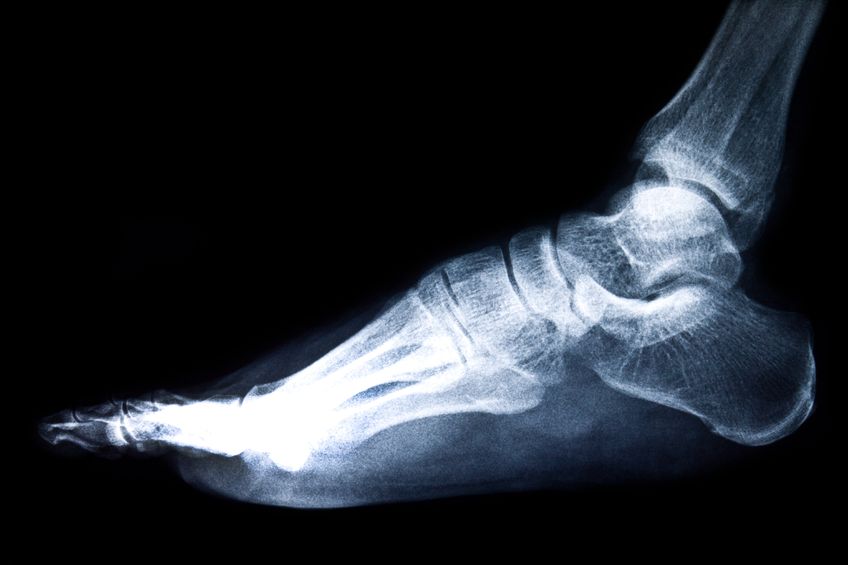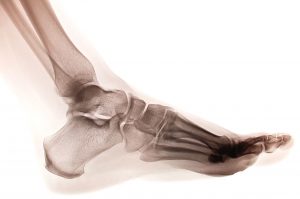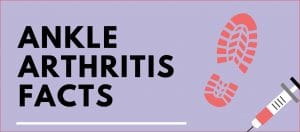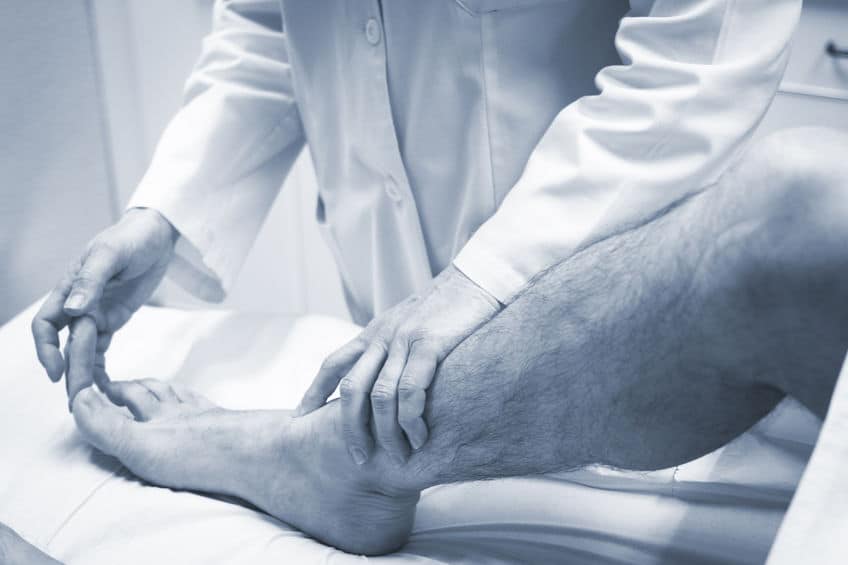What is Ankle Arthritis?

The manifestation of ankle arthritis causes as much psychological and physical damage to the body as does the arthritis of the knee, hip, and back. In addition, we now know that ankle arthritis also causes as many functional limitations as does arthritis of the knee and hip.
However, ankle arthritis is only recently being recognized nationally as an actual pain source and entity worthy of treatment. Ankle arthritis has been considered secondary to hip and knee arthritis for a while.
Dr. Warner has been treating ankle arthritis for over a decade and is up to date on all cutting-edge treatments.
An unstable ankle due to ligament damage (sprains) that heal improperly can cause enough shear force to an ankle to produce arthritis. Also, a previous break/fracture will have abnormal motion if it is not repaired anatomically and that leads to abnormal forces on the cartilage; thus arthritis develops. It is very important that ankle fractures be corrected with exquisite attention to detail and anatomy.
The ankle is a small and perfectly shaped joint; it was not designed with the same amount of give and play that the knee and hip have. Therefore, fractures of the ankle have many more long-term consequences with regard to arthritic change.
Fractures that cause significant cartilage damage lead to ankle arthritis.

Cartilage is the smooth surface on either side of a joint. Arthritis is simply damaged cartilage.

DOWNLOAD OUR
ANKLE ARTHRITIS FACT SHEET
Causes of Ankle Arthritis

Diagnosis Process
Pain is often associated with arthritis. However, some people with arthritis have no pain at all; it is not predictable who will have pain or who won’t. Many times other factors play into the perceived pain beyond the actual arthritis that is present. Ankle arthritis is no exception to the association of arthritis and pain; typically ankle arthritis hurts during activity (work, walking, running, etc.). Occasionally pain occurs with changes in the weather or after activity. Sometimes pain is spontaneous. There is a genetic predisposition to chronic pain related to arthritis. Cartilage itself has no nerve endings and arthritis in and of itself cannot be painful.
The pain that is associated with arthritis is typically due to associated damage to the bone that the cartilage sits upon, the synovial tissue or joint capsule and the ligaments around the ankle. In addition, the muscles of the leg can hurt, as can the nerves that surround the joint. The inflammatory fluids that are released due to the inflammation can sensitize nerves; this may contribute to pain as well. It is important that the actual source of pain be recognized prior to beginning or selecting any treatment method.
Just because there is the presence of arthritis on an X-ray and the pain is at that joint does not necessarily mean that there may not be another source of pain. Diagnosis of actual pain source should be mandatory prior to any surgical intervention.

Call 225-263-1296
To Schedule Your Appointment




